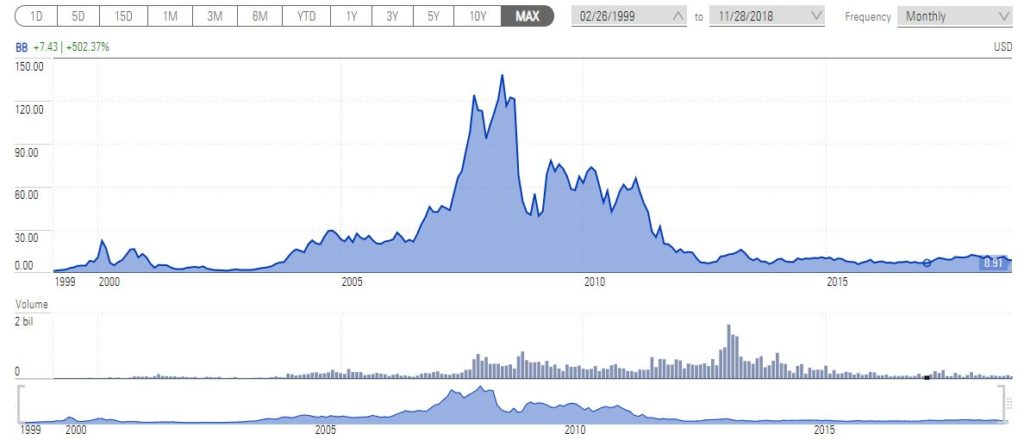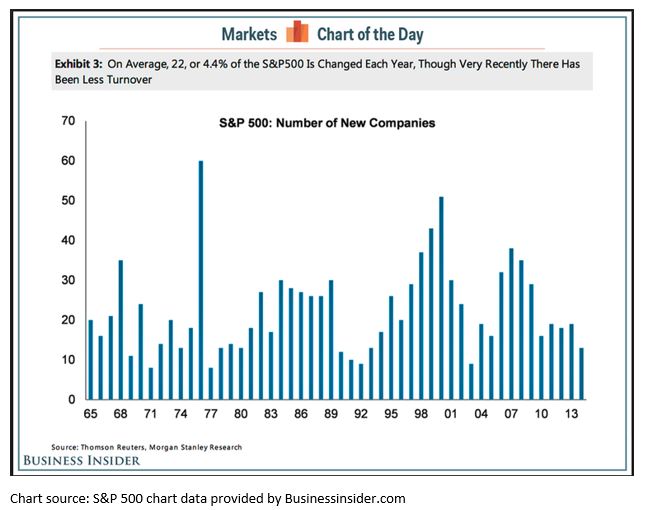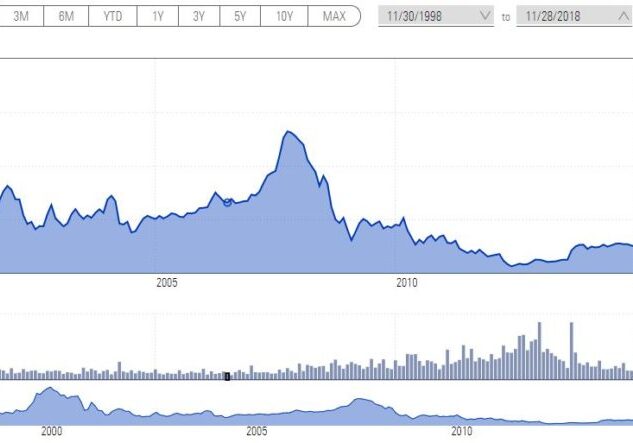Time – and the S&P 500 – prove that the only constant is change
Recently I was visiting with a client and she brought out a stock certificate that has been sitting in her bank safety deposit box. The stock: Nokia. Share count: 3. We chuckled for a moment, given that the transaction fee to sell the shares was going to cost nearly as much as the shares were worth. We almost transitioned to another more important topic, only to be remiss about the important lesson to be learned here. Like your cargo shorts and bell bottom pants, stocks go out of style. Sounds surprising to hear from an investment firm doesn’t it?
You don’t have to go far back in history to remember the video game Snake on everyone’s hand-held devices. Only the late ‘90s and early 2000’s is when Nokia and Blackberry were the devices in demand, in-style. Today, these devices are antiques when compared to the iPhone & Galaxy provided by Apple & Samsung, respectively. Oh, and by the way, here are Nokia’s & Blackberry’s monthly price stock charts:

Chart source: NOK monthly price chart data provided by Morningstar

Chart source: BB monthly price chart data provided by Morningstar
Sure, you might say well of course this is to be expected within the technology sector. What about Sears Holdings Corp., the largest US retailer until 1989. Sears had gone out-of-style, failing to adapt to the new way of business with reporting over 30 straight quarters of year-over-year declines in revenue. Then there’s Radio Shack Corp., once often the go-to store for electronics and Friday night entertainment but once again a victim of the new economy. Another tragic and not so long ago company’s demise was Lehman Brothers. Once the 4th largest investment bank in the U.S.: bankrupt
Are you ready to put all of your money into certificates of deposit and US Treasury bonds yet? Just like our favorite love story, the story can end happily ever after with stocks: The Index.
The Index, the S&P 5001, like a fine wine, continues to get better with time. Simply defined as the largest 500 companies in the United States by market capitalization, the S&P 500 has changed components on average 22 times per year since 1963. From 1963 – 2014, there were a total of 1,186 component changes! In 2000, as the dot com bubble was starting to burst, 56 companies were swapped out of the index. As of the date of this writing, there have been 21 companies added to the S&P 500 in 2017 and 21 companies removed from the S&P 500 in 2017.

The index is constantly changing. Facebook, a company that did not even exist 15 years ago, was welcomed into the S&P 500 in December of 2013 when it replaced the test equipment making company Teradyne. This is the way market capitalization weighted indices behave, and the strong investor should own multiple indices in the public market for the broad-based market exposure and diversification benefits.
What will be the next company to see its stock price and market capitalization soar to the moon? What will be the company of the future for your grandchildren and great-grandchildren? More than likely it will not be one of the companies of today. But, it will enter the index at some point. So as for our $20 worth of Nokia, the shares make for a great charitable deduction or night at the movie theater.
Footnote:
- There are many indices, such as S&P 400; Russell 2000; Wilshire 5000, etc.



